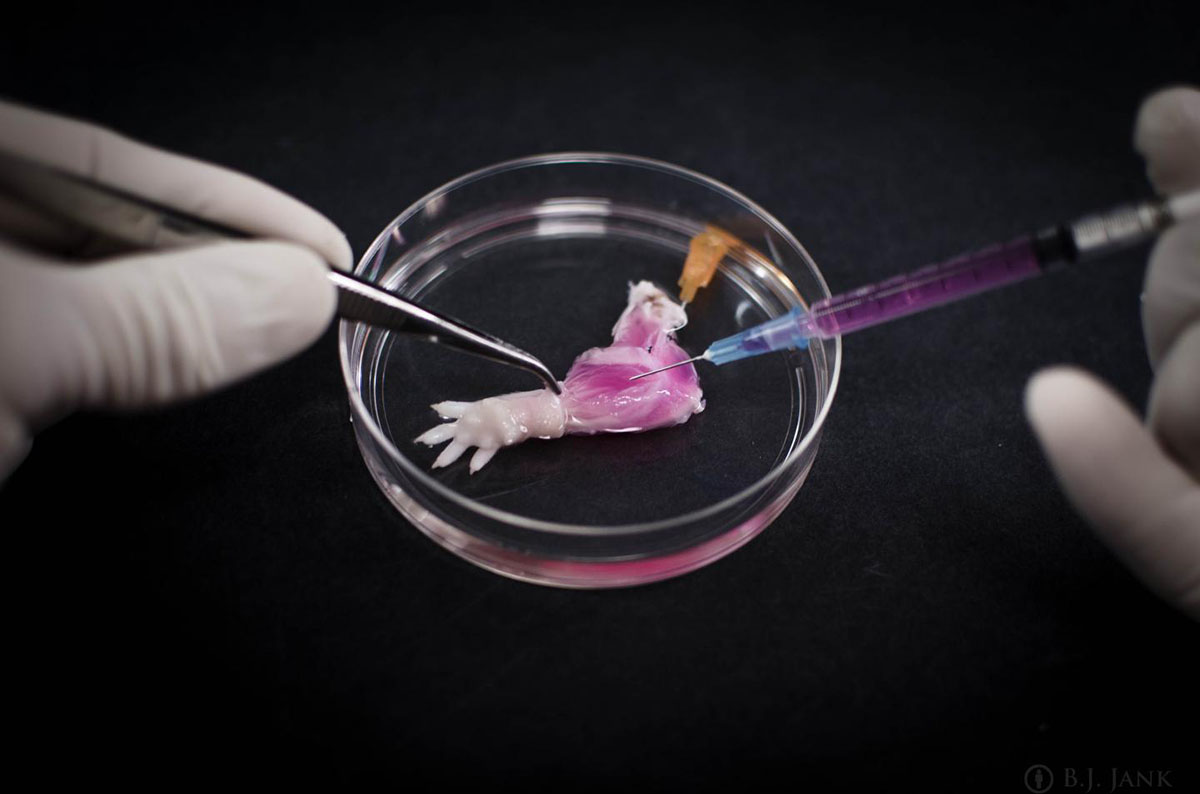Mass General Researchers Are Building Functional Artificial Limbs for Rats
Massachusetts General Hospital has announced that a team there has made significant progress in engineering bioartificial limbs for transplantation, the latest in Boston’s string of pioneering transplant work.
“Bioartificial limbs for transplantation” means that Mass General’s team is working on constructing artificial forelimbs with functional vascular and muscular tissue for rats, as opposed to prosthetic or donor limbs. If successfully transferred to humans, the technology would provide limbs that come closer than ever before to mimicking the natural body, a huge advance for the 1.5 million people nationwide who have lost limbs.
In a statement, the study’s lead researcher Harald Ott explains the challenges associated with building artificial limbs:
“Limbs contain muscles, bone, cartilage, blood vessels, tendons, ligaments and nerves – each of which has to be rebuilt and requires a specific supporting structure called the matrix. We have shown that we can maintain the matrix of all of these tissues in their natural relationships to each other, that we can culture the entire construct over prolonged periods of time, and that we can repopulate the vascular system and musculature.”
Right now, the researchers are using a technique developed by Ott—which was previously used in engineering organs—to create rat forelimbs. In layman’s terms, the method involves using a detergent solution to slowly remove cells from the forelimb of a deceased rat, eventually leaving behind only the structure of the part. Then, muscular and vascular cells that have been grown in the lab are injected into the limb to regenerate veins and arteries, eventually creating a functional replacement limb.
Early testing shows that the regenerated appendages come close to the normal function of newborn animals’ limbs, allowing the rats to contract muscles, flex joints, and circulate blood normally. It’s a promising result, but the work is far from over. In an announcement, Ott says next steps include regrowing nerves in artificial limbs, and transferring the technique to other tissues like bone, cartilage, and connective tissue.



